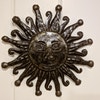Talk me out of using countertop induction cooktops (with outlets for both higher powered commercial and lower powered household devices) as my burners vs having a built-in cooktop.
Besides not being aesthetically pleasing, what’s the downside of strictly using countertop induction cooktops, both commercial and household varieties, as my burners? If I go for the individual cooktops, I could easily replace them individually if they break or if technology or features improve, plus I can put them away for when I need more countertop space. I do use my current built in cooktop as “counter space” during gatherings, but I’m always leery of doing this for safety reasons.
Edit: There’s a wonderful community being built here. Thank you all for you responses and for the great thinking points. While I’m not entirely sure of which direction I’ll go as far as countertop vs built-in, I’m definitely sure I’ll be using induction.




Add comment